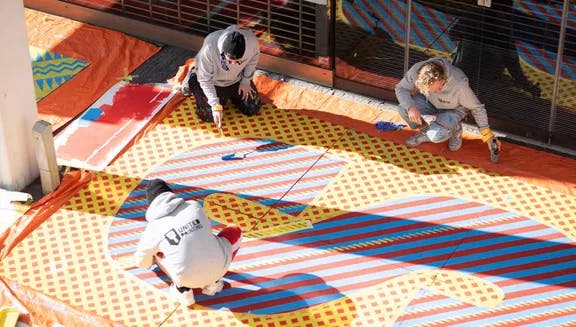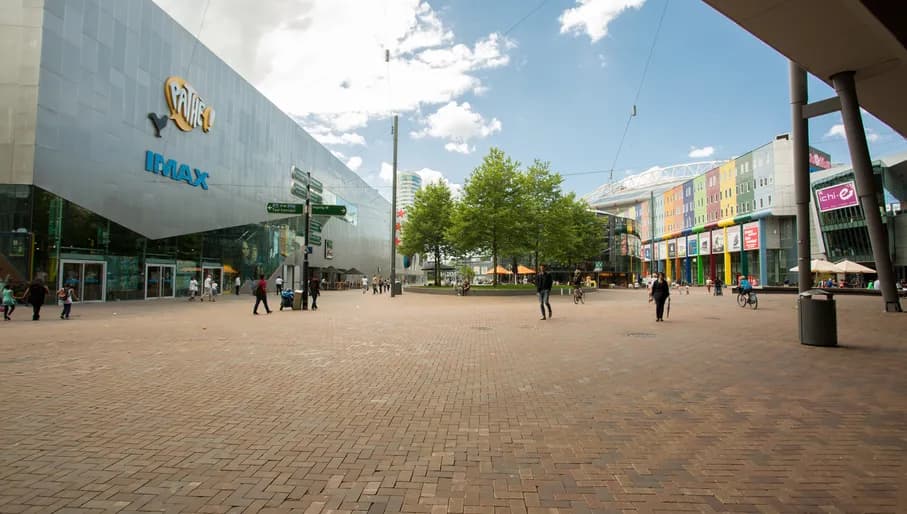
Art and culture in Zuidoost
1 April 2025


With the city facing a population boom in the 1960s, Zuidoost was developed as an answer to Amsterdam’s overcrowding and housing crisis. Buoyed by utopian ideas of a futuristic district that would provide a green escape from Amsterdam’s overcrowded urban centre, and centred around Modernist principles of light and functionality, the Bijlmermeer development came into being. These towering high-rises embodied a form of modern urban living, unlike anything the Netherlands had ever seen.
But reality didn’t quite match the dream. By the 1970s, the Bijlmer had gained a reputation for its high crime rates. Middle-class Dutch families largely avoided the area, and instead, it became home to a growing number of migrants facing systemic neglect with a lack of investment in public services and maintenance. The area’s struggles were further amplified by the devastating 1992 Bijlmer air disaster, when a cargo plane crashed into two apartment buildings, leaving deep scars on the community.

These days, Zuidoost has transformed into one of Amsterdam’s most diverse and exciting districts. Becoming a centre for music, sport and innovation, Zuidoost has seen major redevelopment efforts since the early 2000s to create a more community-oriented suburb. These changes replaced high-rises with lower-density housing, created parks and improved public transport links to connect Zuidoost more seamlessly with the rest of Amsterdam. The development of the ArenA Boulevard, which includes the Johan Cruyff Arena, AFAS Live and the Ziggo Dome, has also cemented Zuidoost’s status as Amsterdam’s entertainment hotspot, hosting international soccer matches, as well as large-scale concerts and events.
Home to thriving Afro-Caribbean, Ghanaian and Surinamese communities, the area boasts some of the best international cuisine in the city. With the rise of communal spaces like the Bijlmer Parktheater and OSCAM (Open Space Contemporary Art Museum), art-making and storytelling are given a platform, celebrating local creative voices. Zuidoost’s community continues to shape its identity, blending cultural heritage with modern innovation in this ever-changing suburb.